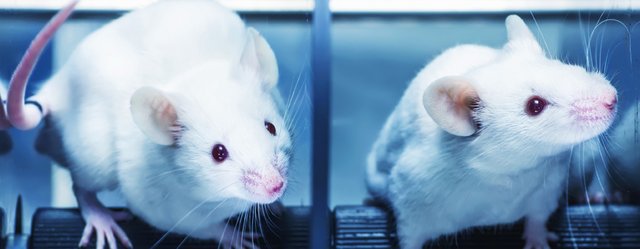4 Movie Technologies Driving Today's Scientists and Engineers
Ever watched a sci-fi movie and seen some awesome technology that you felt like you just HAD to have? Well, many of today’s top scientists and engineers have felt the same way. And for some of them, seeing something on the screen was just the inspiration they needed to dedicate their lives to building it in the real world.
From the iPad, to Amazon Alexa, to self-driving cars, many of today’s technologies have roots in the movies of yesterday. Here are four movie technologies that are driving development today.
Implanting False Memories: Inception

From action movies like Total Recall, to dramas like Eternal Sunshine of the Spotless Mind, to everyone’s favorite mind-bending headtrip, Inception, themes of memory-manipulating technologies have been a fascinating and enduring theme in movies for as long as anyone can remember. But only with the latest advancements in neuroscience have researchers been able to actually start probing into some of those ideas.
Take MIT neuroscientists Steve Ramirez and Xu Liu. “We began touching on these ideas mainly because all of us are huge fans of movies like Inception… For me personally, looking to Hollywood is a great source of questions. I feel that Hollywood is a repository of all these fantastic ideas, because nobody in Hollywood is limited,” said Ramirez.
In 2013, the team developed a technique called ‘optogenetics’, in which lasers are used to stimulate cells genetically engineered to be sensitive to light. While that sounds pretty sci-fi-like in and of itself, what’s really fascinating is that with this technique, they were able to identify brain cells in mice called engrams, where individual memories are stored. And once they identified those cells, they were able to manipulate them.

The scientists were able to delete associative memories, making the mice unafraid of previously frightening stimuli. And even more interestingly, they were actually able to implant a false memory- make the mouse terrified of a box it had never even seen before. They could then turn the memory “on” and “off” at will.
As of 2015, there were over 20 labs experimenting with this technology. And while it’s still in the very preliminary stages, scientists are already envisioning possible benefits: imagine what PTSD treatment would be like if your doctor could simply delete the fearful memory from your brain. Imagine what breakups would be like if you could delete all emotional memory of your former partner (or rather than imagining, just watch Eternal Sunshine of the Spotless Mind.)
And as for incept-ing, or introducing false memories a la Inception, well, there has to be some non-nefarious use case for that, right?
M-Blocks: The Beginning of Real-Life Transformers

Imagine robots that can self-assemble into infinite different forms: cars, humanoids, houses, weapons. The Transformers franchise imagined it in the 80’s, and now engineers at MIT are imagining it as well, with small cubes they call M-Blocks.
Through clever use of flywheels that spin at 20,000 rotations per minute, and carefully aligned magnets, each cube is able to autonomously bounce around until it meets another M-block, then snap into place in its programmed configuration. Right now, the cubes are a few inches on each side, but as the technology improves and they get smaller, this will allow for incredibly intricate and fast constructions.

“We want hundreds of cubes, scattered randomly across the floor, to be able to identify each other, coalesce, and autonomously transform into a chair, or a ladder, or a desk, on demand,” says Romanishin, leader of the development team at MIT.
From chairs, to desks, to fully autonomous, giant, transforming battle robots, the possible future applications of this technology are endless.
The Back To The Future Hoverboard
Hoverboards currently exist. No, really. There’s the Arcaboard, the Arx Pax Hendo Board, and even a model by Lexus (not currently available for sale.) The hoverboards of today typically have a battery life of only a few minutes, require tons of loud fans (Arcaboard) or a magnetic metallic surface (Hendo) to work, and cost upwards of $10,000, so perhaps we’re not quite ready to soar like Marty McFly, but that’s the dream.

The creators of the Hendo hoverboard, which was released on October 21, 2015, or Back To The Future Day, are also working on many other applications of the hover technology that could have some awesome practical implications. Think about moving around large objects in warehouses or construction- hovering objects are essentially weightless to move, and can turn 360 degrees with no turning radius.
With the right kind of manipulation of magnetic fields, hover technology could also de-couple the movement of an object from the necessity to physically touch it, making moving heavy objects an absolute breeze. Plus, with that kind of technology, it would be easy to convince your friends you had telekinetic powers. Now that’s a future worth pushing for!
Star Wars Holograms

Ever since we saw Princess Leia beg Obi Wan for help using a holographic projection like some kind of outer-space Skype, the world has been dreaming of holograms. Holograms have become almost a ubiquitous presence in high-tech futuristic film settings, featuring in movies from Minority Report, to Her, to Blade Runner 2049.
And now with the most recent developments in holographic technology, and improvements coming quickly, that future envisioned in film is finally arriving.
For a long time, the main problem with the development of holograms was that the projected images could only be viewed from specific, narrow angles. Until very recently, any “holograms” that we’ve seen (such as 2012’s “holographic” appearance of Tupac at Coachella) have actually been illusions- high quality 2D projections rather than real, 3D holograms.
But that’s all changed in recent years. In 2016, Giga KOREA announced the development of the first real, 3D color holographic projection that can be viewed from any angle (just like in Star Wars!). And according to the team, the technology to be able to transmit these holograms over 5G technology is already underway.
And while full 3D holograms are not yet mainstream, real, wide-angle holograms are no longer confined to the research lab. This April, Yuval Noah Harari became the first TED speaker to appear as a hologram, using ARHT Media’s Holographic Telepresence Technology. Harari appeared full-size, viewable to all of the audience in 3D, and was even able to answer questions in real time! AHRT’s system is the first complete, end-to-end system for projecting human holograms, which they charmingly call HumaGrams.

And this is just the beginning. With many of today’s top scientists inspired as kids by watching the awesome sci-fi series and movies of the 70’s and 80’s, we can expect to see even more of our favorite movie technologies coming to life in the near future.